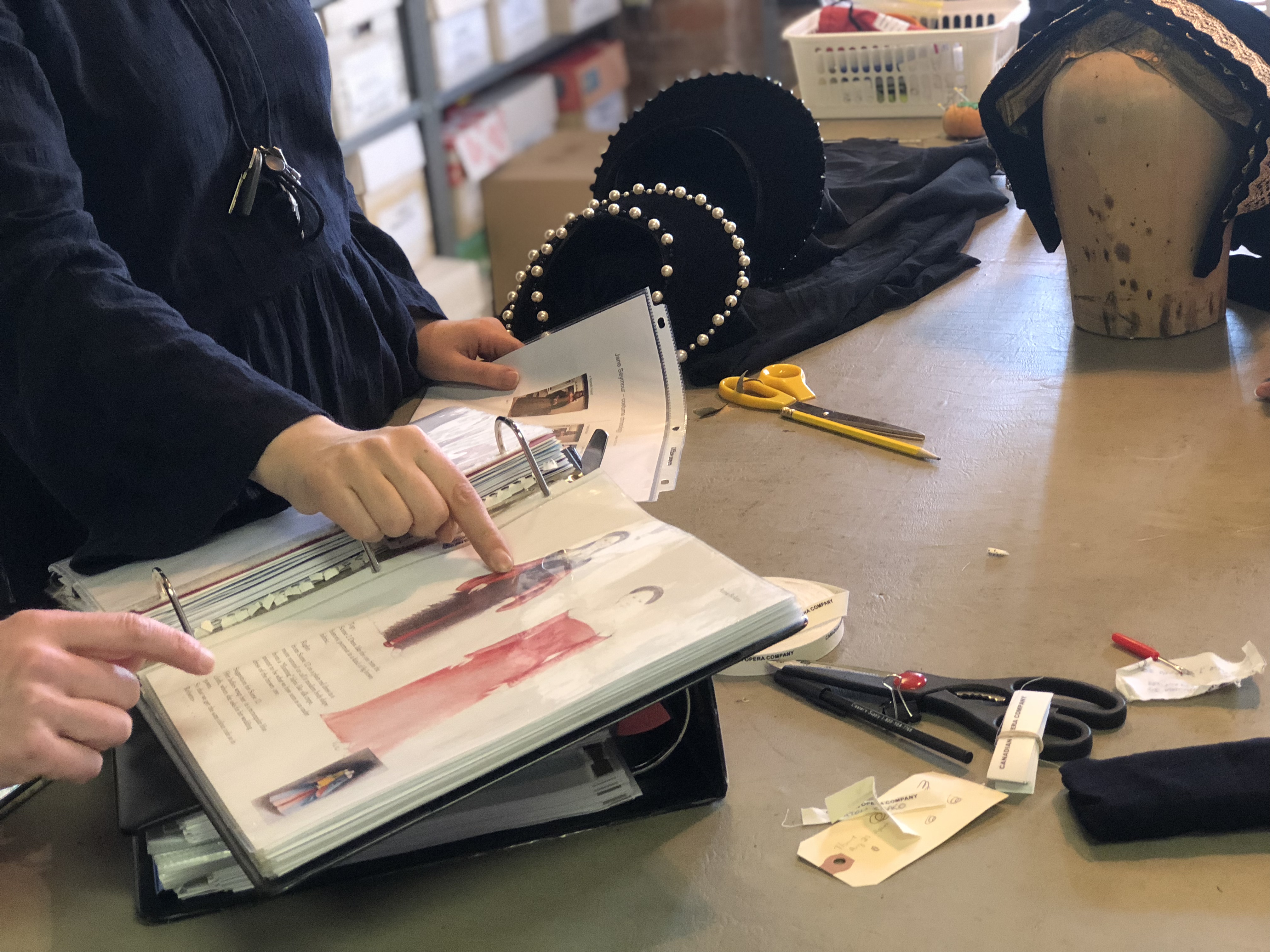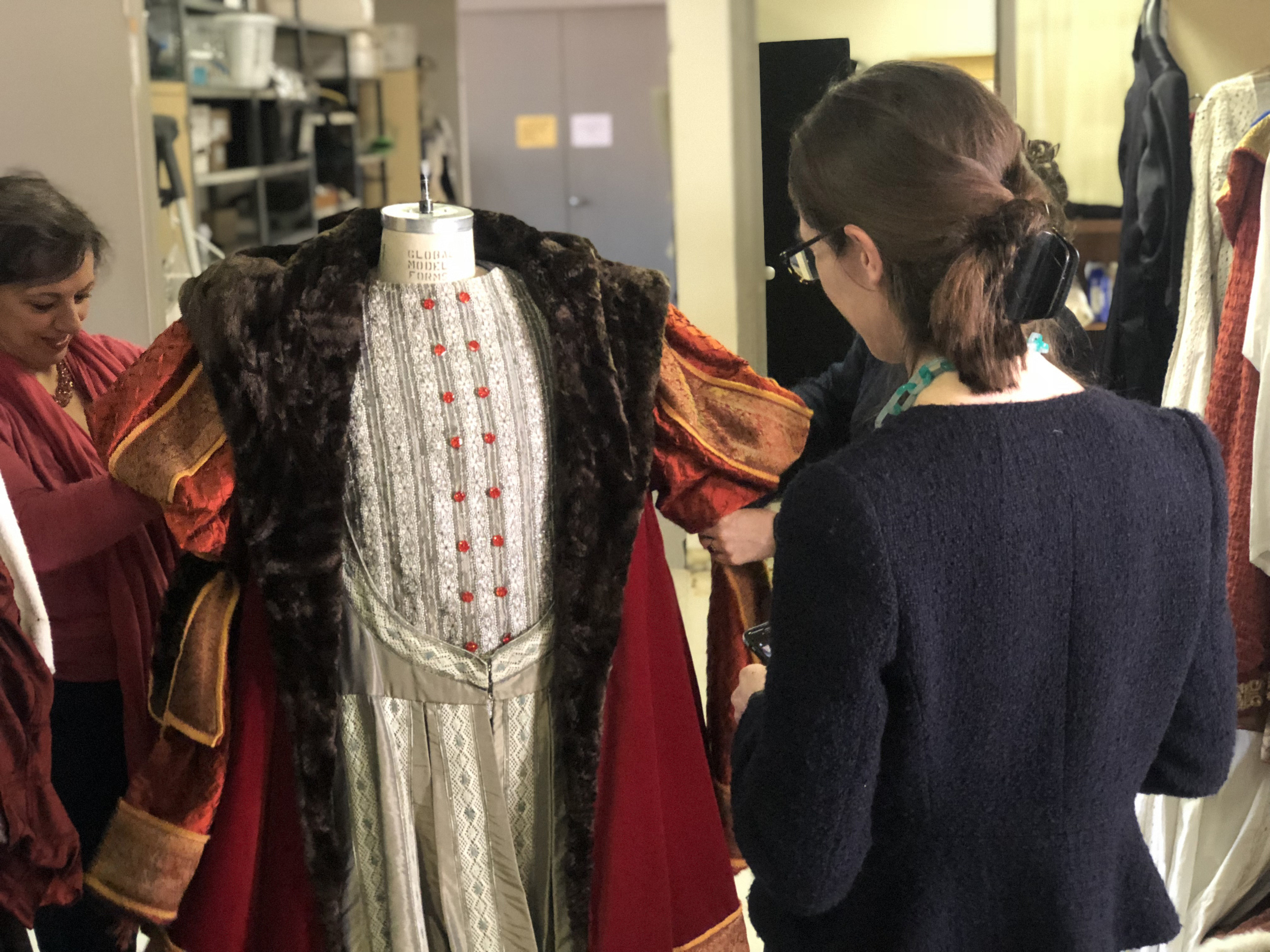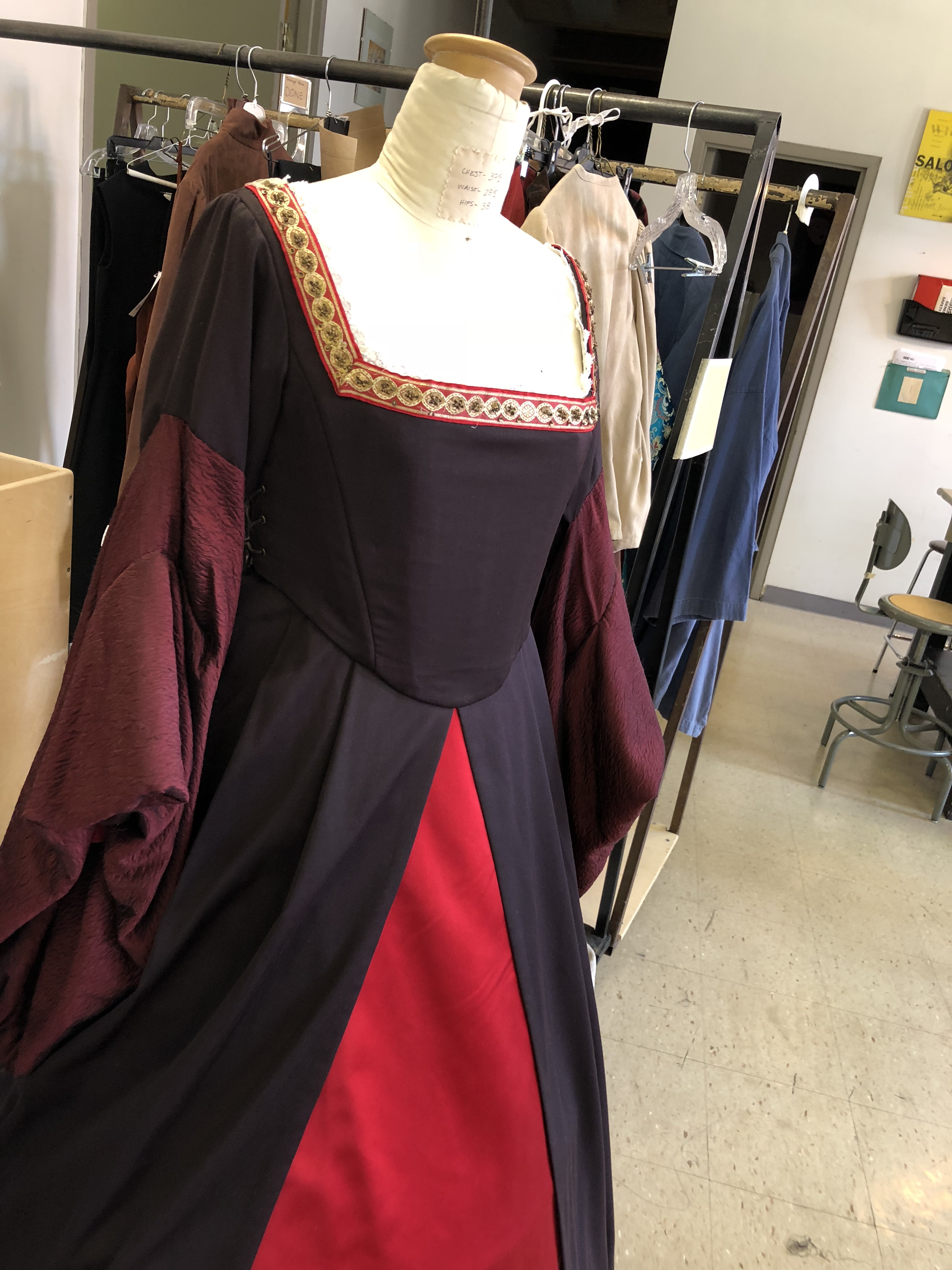-
You Are What You Wear: Power Dressing in the Tudor Court
By Taylor LongPosted in Anna BolenaQ&A with curator Alexandra Kim

The COC’s spring production of Donizetti’s Anna Bolena features sumptuous costumes designed by Ingeborg Bernerth.Recently we gave a sneak peek of these royal garments to Alexandra Kim, a curator for the City of Toronto and a former curator for the Royal Ceremonial Dress Collection at Kensington Palace in London, England. She is also the co-author of The Dress Detective: The Practical Guide to Object-based Research in Fashion, a guide that demonstrates how the close analysis of fashion objects can enhance and enrich interdisciplinary research.
In this Q&A, Alexandra sheds light on the political and personal dimensions of royal dress in the 16th century.
Tell me about your current role as curator for the City of Toronto, and your former role as curator for Historic Royal Palaces.I have worked for pretty much my whole professional life in museums, and often as the curator of different dress collections. Just before I came to Canada, I was working for Historic Royal Palaces overseeing the Royal Ceremonial Dress Collection at Kensington Palace—one of six royal palaces managed by the charity. The other five palaces include the Tower of London and Hampton Court Palace, which of course were the stages of so much of the drama of Tudor royal life.
For a long time I’ve been fascinated by royal dress—how it relates to what other people are wearing, how far it’s fashionable, but how far it’s also not fashionable. As you mentioned, now I work for the city of Toronto as a curator looking after one of the sites in the west end, a wonderful museum called Montgomery’s Inn.
One of the things I really love about dress and working with historical garments and costume design is that dress is really relatable to everyone. We all have some experience of wearing clothing.
The amount of work, careful planning and organization that goes into costume design is incredible. What you see on stage is the tip of the iceberg. In that way, there are a lot of similarities between opera and the royal court. One of the things, certainly at the time of Henry VIII, was that so much of the clothing was about showing people you were fit to be king, and really putting on a show of magnificence. I think most people associate opera with an idea of opulence and magnificence, which are concepts that would have been very understandable to Henry VIII. So, I like the symmetry between looking at the court of Henry VIII and then performing that on stage. I think they fit very nicely together.
In Tudor England, was there an aspect of clothing being used to preserve status and rank?
I think clothing was absolutely instrumental in helping people cement their position—and there are even instances of dress being used in a very political way. For Henry VIII, he wanted to prove to people that he was a worthy king. This was even more important for Henry, because famously, he had so much difficulty in gaining a male heir—one of the first duties of the king. We know that he spent vast amounts of money on clothing, but one of the best examples of him proving his worth as a king through his clothing was his visit to see Francis I in 1520. The trip became a sort of showmanship competition between the two kings—who could dress better than the other. Each day became this incredible contest in terms of their outfits and we have written accounts where you can clearly see that they were trying to outdo each other in terms of the intensity and opulence of the things they were wearing—the cloth of gold, the jewels. So, in that very obvious and overt way, clothing was being used to secure their positions.
In more subtle ways, we have a sense of allegiance that came into play with clothing. There’s a really poignant story about Anne Boleyn, who discovered that someone was taking fabric to Catherine of Aragon so that she could sew shirts for Henry. This would have been seen as a virtuous wifely duty. Anne, who at this point was not yet queen, stops the fabric from going off to Catherine of Aragon and has the shirts made by a seamstress before sending them off to the King. So you have clothing in this very intimate setting, playing a clear political role about who is in favour and who is going to win the king’s affection. At every level of court, people were playing the clothing game.
Were there any fabrics or colours that were restricted to the court’s use?
Yes. There were very clear rules and regulations—some of which may have been unwritten. There were also sumptuary laws that very clearly limited the use of certain fabrics and colours—expensive items like cloth of gold and cloth of silver, where you have metal thread directly woven into the fabric. But there were also limitations on colour, because of the immense expense of the dyes required to produce purples and reds.
You see an increase of these restrictions in the court of Henry VIII and one person who became a little unstuck by all this was Thomas Cromwell—a man who had an incredible rise and fall under Henry VIII. When Cromwell was finally arrested in 1540, one of the things that people attacked was his clothing. He came from incredibly humble beginnings, so people really took offense at this idea that someone who came from nowhere could, by their clothing, project an image that suggested that they were important at court.
Can you talk about some of the fashion trends that would have been present during Anne’s reign and how clothing might have evolved during the three years that she was queen?
With clothing at the Tudor court, the idea of fashion might not have been a familiar concept.
I think for Anne, the most debated element of her clothing was her wearing of the French hood. Many people say that Anne introduced the wearing of the French hood, but there’s historic evidence to show that Henry’s sister, Mary Tudor, who was in France and briefly married to Louis XII, brought that fashion back to England.
Anne might not have been the instigator, but importantly, she has always been associated with it. The French hood, a style of headdress which has a lovely kind of curve around the top of the head, became almost a symbol of Anne’s French elegance and manners. When she’s in favour, everyone sees those as very good things. But when she’s out of favour, they are seen as the terrible influence of French fashion and everybody makes a move to be seen as much more English.

(l-r) English hood (gable headdress) worn by Jane Seymour in the production, French hood worn by Anna Bolena in the production
Really tellingly, you see a very clear dividing line between her reign and the reign of Jane Seymour, who tells her ladies-in-waiting that she doesn’t want them to wear the French hood. There’s a very clear directive that they should stay away from things that are perceived as French fashions. In that way, this is another lovely example of clothing being intensely political. You cannot escape it at Henry’s court. Clothing was always wound up in these bigger layers of intrigue, jealousy, and physical maneuvering.
Can you tell me about the historical authenticity of the costumes for Anna Bolena?
Unfortunately, the clothing worn by Henry VIII and Anne Boleyn has not survived, but we do have a number of incredible portraits. For the King at least, we have very good wardrobe accounts and information about the types of fabrics and clothing that he was ordering and therefore wearing—but we also have big gaps in our knowledge. It becomes sort of like a detective trail to try and work out what these figures were actually wearing.

Henry’s costume for Anna Bolena is a really beautiful example of how the costume designer [Ingeborg Bernerth] is creating this sense of magnificence that we discussed. They’ve taken fabrics that wouldn’t have been necessarily available at the time—the trim, the lace, which at that point was really in its infancy and would all have been done by hand—but from the stage, it’s going to read as magnificent. Also, the way that the fabric has been altered, by adding sequins and jewels, really helps to create that sense of opulence that you expect from Henry’s clothing.
What’s great about this gown, which is the big fur-lined garment that’s going on top of everything else, is that I think for most people, this is what you expect Henry VIII to be wearing. This sense of bulk is what they remember from the famous Hans Holbein portrait. It is a wonderful example of clothing as signifier. It is amazing how clothing has that transformative effect.

The accounts of Anne Boleyn from the day of her execution talk about her wearing a red petticoat and a grey damask gown—in that sense the colours here are not that dissimilar. The main promotional photo for the production emulates the copy of that famous Anne Boleyn portrait. Certainly in copying the piece of jewelry, it’s clear that the costume designer, Ingeborg Bernerth, was drawing on some of the best known Tudor portraits to give this production an honest Tudor feel.

Anne Boleyn by Unknown English artist oil on panel, late 16th century, based on a work of circa 1533-1536; Right, Sondra Radvanovsky in Anna Bolena (Washington Opera, 2012), promotional photo: Cade Martin.
To hear more from Alexandra Kim, check out her upcoming free Opera Insights event, Anna Bolena: The Role of Clothing in the Court of Henry VIII.
Monday, April 30, 2018, 7-8:30 p.m.
Education Centre, Four Seasons Centre for the Performing Arts, 145 Queen St. W.
Visit https://learn.coc.ca/eventsprograms/adults/opera-insights for more information
